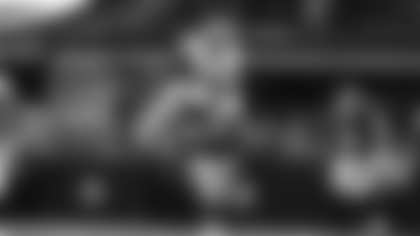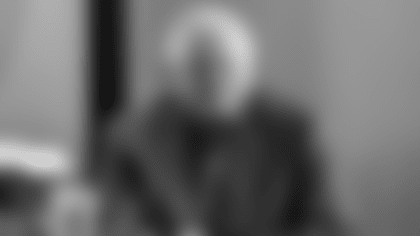Plagued by another slow start, the Cowboys' road to the postseason just got a whole lot rockier. In addition to dropping 1.5 games behind the Giants, Dallas let the Redskins back into the NFC East picture. Here are a few of my observations from the game.:
- Head coach Jason Garrett was really forced into a corner with his play-calling by the second quarter. Before the Cowboys got down big, however, we saw two counters, two play-action passes, an end-around, a screen and four plays with pre-snap motion.
- I've talked all season about the need for more play-action passes, and I have a feeling we would have seen a bunch of play-action looks had the Cowboys been playing in "normal" game situations. They ended up running three on the day for only eight total yards, but overall play-action looks have worked for Dallas and most NFL teams in 2012.
- If you recall, Garrett has shied away from calling play-action passes this year in a big way, and the most obvious reason for that is the lack of a rushing game. It certainly seems like play-action passes would be useless without some rushing efficiency, but I'm not sure that's the case. Of the 10 worst rushing teams in the NFL in terms of yards per carry (YPC), only one has a lower yards per attempt (YPA) on play-action passes as compared to straight dropbacks. The Dolphins have totaled 3.6 YPC, only 0.1 more than Dallas, but Ryan Tannehill has passed for nearly five full yards more on play-action passes as compared to all other attempts. The Jets have averaged only 3.8 YPC, but Mark Sanchez has 2.1 more YPA on play-action passes, and the list goes on. While it sure seems like you'd need an effective running game to "set up" play-action, the numbers don't bear it out. The Cowboys can and should run play-action in normal game situations moving forward, regardless of how well they're running the ball. Of course, the majority of the loss to the Redskins was far from normal situations, so the lack of play-action looks yesterday isn't a concern.
- Romo's attempt to post the biggest comeback in Cowboys history fell just a little bit short, but he really played well despite not having his best stuff. I counted 10 of Romo's passes as being off-target, about twice his normal number. We'd expect a few more errant throws with 62 attempts, but it was clear that Romo battled through a day in which he wasn't at his best to lead his team. Had a play or two gone differently, Romo's performance would have been considered legendary.
- To show just how out of whack this game was, consider that the Cowboys used either three or four receivers on their final 53 snaps. That's pretty remarkable, and it's a good example of why analyzing a coordinator's personnel usage is usually pretty fruitless. There will be a lot of talk about how Garrett used way too much "11" personnel this year, but he's really had no choice.
- Cole Beasley's emergence was a big positive for Dallas. He dropped one pass, but overall he provided an underneath presence that we haven't seen from a Cowboys' third receiver in a long time. Once Miles Austin returns, we may very well see him stay on the outside in three-receiver sets with Beasley in the slot. The rookie out of SMU had 13 targets on the day.
- Whenever the Cowboys get down in games, there's usually talk about when they should go for two after scoring a touchdown. There's a general consensus that you should never go for two before the fourth quarter, but that seems silly. First of all, if your expected value from a two-point try exceeds 1.0 (the worth of an extra point), you should go for two in all normal game situations. That is, if you think you can convert at over a 50 percent clip, going for two is the right call. However, it's beneficial to go for two at times even when the expected value is less than that of an extra point.
- The Cowboys found themselves down by 16 points following a touchdown on two occasions yesterday. On the first, they kicked the extra point, and on the second they went for two. My hunch is that Garrett's decisions were based on the time remaining in the game, but I thought the 'Boys should have gone for two both times. In any game in which you know you'll need a two-point conversion at some point (such as when you're down by 22 points), you should go for two as early as possible. The reason is that the result of the attempt provides you knowledge about how you should play later in the game.
- If you score a touchdown to go down 16 and go for two, you'll either convert to cut the deficit to two touchdowns or fail and stay down 16. If you fail early, you could still tie the game with two touchdowns and a pair of two-point conversions. If you kick the extra point to go down 15, however, you'll still need a two-point conversion at some point. If you fail on a subsequent try, however, you can't make up for it—the game remains a two-possession game—whereas if you go for two earlier, you can still tie the game with two possessions. Remember, a 15-point deficit isn't really a two-score game—it should be considered a 2.5-score game. The advantage of going for two earlier is a tiny one, but it's large enough to make up for any small negative expected value a two-point try holds.
- Romo threw only three passes that traveled at least 20 yards, and the last one, the deep ball that popped out of Dez Bryant's hands on the final drive, was kind of out of necessity. The others were an incomplete pass to Jason Witten on an out-and-up and the 85-yard touchdown to Bryant on a dig. The latter pass might not have seemed too deep, but it actually traveled 21 yards past the line-of-scrimmage.
- One of the primary reasons we didn't see more deep looks from the Cowboys is that the Redskins brought major pressure on Romo all day. I tracked them as blitzing (sending more than four rushers) on 28 plays, 37.3 percent of the Cowboys' offensive snaps. More importantly, they disguised their looks incredibly well. Washington either showed blitz and backed out or lined up conservatively and then blitzed on 25 snaps, i.e. when they didn't blitz Romo, the Redskins still acted like they would. That helped to confuse some of the linemen and allow the Redskins to generate pressure even with their four-man rush. Both of Romo's interceptions came against a blitz.
- Of the Cowboys' 63 passes (including two sacks but excluding one spike), Jason Witten went into a route 61 times. As recently as 2009, Witten was in a route on closer to three-fourths of all pass plays. The Cowboys obviously felt like they needed to use their tight end as a pass-catcher when facing such a large hole, and you can't blame them. The only two passes on which Witten wasn't in a route were the two screen passes to Bryant and Dwayne Harris.
- A lot of things could be made right if the Giants lose to the Packers this weekend. The Cowboys now have to fight off the Redskins, but both teams would be just a game back of the division lead. At 5-6, that's all you could want.














